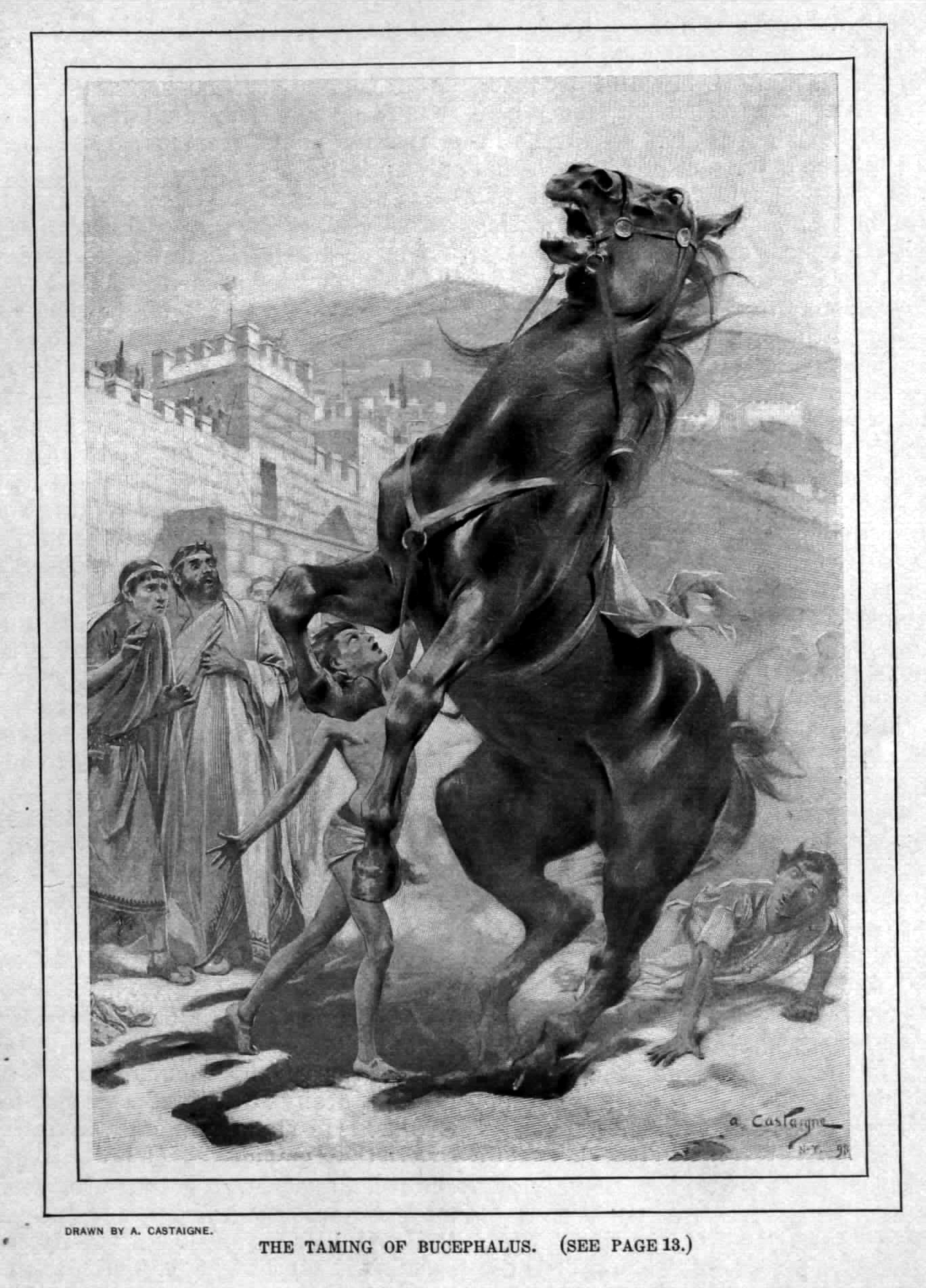
Image credit: Jean Alexandre Michel André Castaigne, The Taming of Bucephalus, from Alexander the Great, published in The Century, (1898–99). Public domain.
Jean Alexandre Michel André Castaigne was a French artist and engraver. Born in 1861 to a painter, Castaigne showed early promise as an artist, and attended the renowned Académie des Beaux-Arts, studying under his mentors Jean-Léon Gérôme and Alexandre Cabanel. By 1884, Castaigne held his first solo exhibit in Paris, resulting in several of his large-scale paintings traveling and exhibiting worldwide. In 1890, Castaigne relocated to the United States where he became the director of a small art school in Baltimore, Maryland. During the 1890s, the illustrated magazine saw a huge increase in growth and demand with such publications as Scribner’s, The Century, and Harper’s Weekly. Stories filled with adventures and tall tales were partnered with beautiful, detailed paintings, and the demand for talented artists soared. Castaigne soon found steady work with his paintings of Western shootouts, rearing horses, Native American tribes, and more. He traveled extensively, creating art for travel periodicals, and also became the official painter for the Olympic Games in 1896. In 1895, he returned to France, but continued to work for The Century, traveling back and forth between the two nations. Castaigne further found work illustrating books including William Milligan Sloane’s The Life of Napoleon Bonaparte, Richard Whiteing’s Paris of To-Day, Bertha Runkle’s The Helmet of Navarre, and perhaps his most popular title, Gaston Leroux’s The Phantom of the Opera. Castaigne passed away in 1925 from a short illness.
